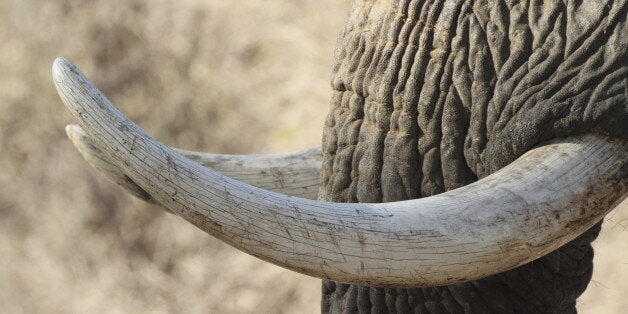
Never has the time been more right for a full domestic ivory ban in the UK. At a time when the Government is already facing a wave of criticism over its manifesto-breaking National Insurance tax hike, all eyes are on its double manifesto pledge of pressing for a 'total ban on the ivory trade'.
So, why now? Last week, on the eve of the launch of an imminent Government consultation on proposals for a partial ban (last year the Government announced proposals for a ban on modern ivory, post 1947), as if the world needed reminding, we learned once more of the reason why this partial ban just isn't enough. Once more we learned that there is quite simply no place for anything that puts a value on ivory and similar products like rhino horn. Not here in the UK and not anywhere.
Last week it was the turn of a rhino named Vince, poached for his horn, to make the headlines. Now, to be honest, the poaching of one more rhino would usually hardly make the news nowadays. With more than 1,000 rhinos per year being slaughtered for their horn for sham medicine (out of numbers of little more than 25,000 or so in the wild remaining), most rhino killing today goes unreported. But, this was different. Vince was in the EU, he wasn't a wild rhino and the world thought he was safe in his enclosure at a Paris Zoo. However, poachers broke into the zoo, shot Vince dead and hacked off his horn.
In the same week we heard of Satao II, one of the few last big tusker elephants of Kenya in Tsavo National Park. After 50 years of roaming his lands in the wild and looking majestic, he was brutally killed and his tusks hacked off. Popular amongst rangers and tourists alike, he was killed not for phoney medicine but so someone could prove their wealth, to make an ornament or some jewellery - all of which no-one really needs. He was one of around 30,000 elephants killed each year in Africa alone for their tusks.
So, even despite the Government's manifesto pledge, banning ivory sales would not be a strange thing to do nor would it be out of kilter with what other nations are doing already. In the US a near total ban has been implemented, France has signed a decree banning the trade in ivory and rhino horn in France and her territories and even China has stepped up to the plate and announced a ban from the end of this year. Yet here we are, some six years after the original manifesto pledge and still no total ban on the cards.
All of the conservation groups are united in calling for the total ban as promised - and the reason is simple: it is impossible for anyone to really tell how old ivory is. The only way to accurately age ivory is to carbon date it, which is specialist and costly. With that in mind, anything less than a full ban is nigh on impossible to police and is confusing for the public. What's more, allowing ivory a legitimate place in the system gives credibility and credence to the idea that ivory has a value, though the truth is that ivory should only have a value when it's on a living elephant. And finally, it allows illegal ivory to be 'washed' through the market as legal - an issue that any dual market amplifies and which can be a significant factor in the poaching numbers today.
So, in some cases a step in the right direction just isn't enough. For the sake of our elephants and for the sake of maintaining Britain's role as a leading player in the protection of endangered species, we need a total ban as promised. We, and the elephants we're all working to protect, can't, and won't, wait any longer.
